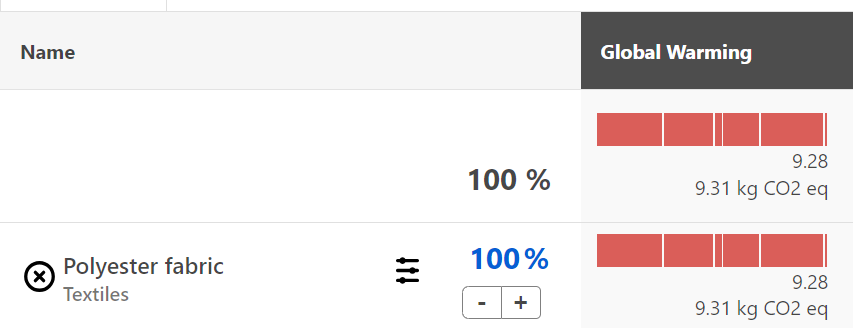When I have trouble sleeping, I like to crack open a good Retail ESG report. They are full of facts and figures highlighting the year’s progress towards achieving corporate sustainability goals. The heroes in these stories are always trying to vanquish Greenhouse gas emissions.
Of the 88 signatories to the United Nation’s Fashion Industry Charter for Climate Action, fifty-eight have committed to specific GHG emission-reduction targets by 2030:
- An average absolute decrease in Scope 1 & 2 emissions of 57 percent.
- An average per unit decrease in Scope 3 emissions of 45 percent.
It is critical for retailers and brands to achieve these Scope 3 targets because they typically account for 95 to 98 percent of overall GHG emissions. Scope 3 emissions are harder to get rid of than bedbugs because they are generated through supply chain activities outside of the company’s direct control.
Retail ESG reports contain a lot of data around the sources of Scope 3 emissions. What stands out in my analysis of 53 ESG reports is the impact that Purchased Goods and Services has on overall emissions. On average, Purchased Goods and Services account for 68 percent of total GHG emissions. This category accounts for more than 80 percent of emissions in a quarter of these reports.
Several retailers and brands break this category down further:
- In Ralph Lauren’s 2023 Global Citizenship & Sustainability Report, Raw Materials accounts for 23 percent of overall GHG emissions with Material Manufacturing and Processing chipping in another 18 percent.
- Raw Material Manufacturing accounted for 89.5 percent of Patagonia’s GHG emissions in FY2023.
Based on these numbers, it is clear that the real villain in the GHG story is the sourcing and processing of raw material fibers. This means that retailers and brands are not going to make a real dent in their carbon footprint without switching to more sustainably-sourced materials.
This is exactly what they are doing
Decker’s Scope 3 strategy includes replacing 55 percent of the materials in footwear products with more sustainable materials. According to their FY23 Creating Change Report, switching to Leather Working Group certified tanneries alone has saved them “over 457 million MJs of energy, over 21.8 billion liters of water, and over 55.3 million lbs. of CO2 eq. emissions.” This is equivalent to taking about 5,400 gas-powered cars off the road each year.
Over the past four fiscal years, Burberry has reduced its emissions from Purchased Goods and Services 42 percent. They are now focused on “implementing a raw materials traceability programme to allow [them] to capture more accurately the quantity of emissions at each stage of raw material production and work more closely with [their] key suppliers on achieving reductions.”
Improving accuracy of material emissions data
If you are preparing a meal at home, you cannot accurately measure total calories without knowing the nutrition details for each ingredient. Similarly, improving the accuracy of material emissions requires capturing and analyzing data at the fiber level.
Suppose that you have a 100 percent polyester material made up of two distinct polyester fibers. Each fiber could have the same raw material composition, but different deniers, spinning methods or dying processes. Now suppose you want to add this material to your Worldly Higg MSI material library so you can calculate CO2 emissions. If you treat this material as one fiber with the same yarn formation methods, you will get something like this:

Compare this to setting up a material with two distinct fibers with two distinct yarn formation methods. As you can see below, changing one attribute in the Yarn Formation (with texturing vs. no texturing) significantly changes the estimated CO2 emissions for the second fiber, which then changes the estimated CO2 emissions for the overall material. By going from 9.31 kg to 8.93 kg CO2, you are increasing this material’s accuracy around 4 percent.

Preparing to go on a fiber diet
Here are a few tips on how your organization can leverage product lifecycle management (PLM) to improve the accuracy of your material emissions estimates and to leverage this data to help your material and product developers make more informed design and sourcing decisions:
- Build a fiber library to capture all the sourcing, preparation, and yarn formation attributes that impact emissions. These attributes can be passed to third-party solutions for scoring and those scores can be applied to the fiber record.
- Add Tier 3 suppliers to your supplier library and start mapping them to fibers they produce in your fiber library
- Create Fiber BOMs for each material. Fiber-level sustainability scores—such as CO2 emissions, water usage, or traceability metrics—can be pulled into the BOM and rolled up to create material-level scores.